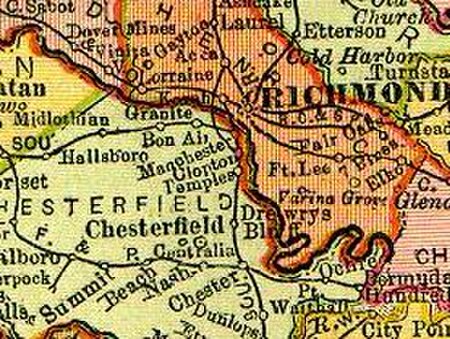In January 2025, the city of Richmond, Virginia, and its surrounding localities suffered water distribution outages due to a blizzard, which impacted much of the United States. The issues started on the morning of Monday, January 6, and were mostly resolved by Saturday, January 11. The localities' water systems are interconnected, meaning that problems in Richmond City led to problems across the region. Richmond was the most impacted, followed by Henrico to the immediate north. Henrico is bordered on the north by Hanover County and on the east by Goochland County, which also faced some impacts. Chesterfield County, to the south of Richmond, was impacted very little, as they were able to effectively switch water sources and have very few customers who directly receive water from the city.
Boil-water advisories were issued for all or parts of Richmond city and Henrico, Hanover, and Goochland counties, as well as for 27 people in Chesterfield County.
Communication issues between the city and Henrico County, and between the city and its water customers, contributed to response difficulties. Impacts were widely felt, with hospitals, schools, and sporting events being among those facing cancellations and service interruptions. Cooperation between localities and among localities and the private sector helped to mitigate some of the issues.
The event had political implications, because the Virginia General Assembly had to recess until Monday, January 13; they had originally been scheduled to start their session on Wednesday. Governor Glenn Youngkin activated the Virginia National Guard, which was made easier because of the state of emergency that had been declared earlier in the week. He called for an after-action review to more fully understand the crisis. Further, Jason Miyares, the attorney general of Virginia, said that he would aggressively prosecute price gouging. Additionally, the outage happened roughly a week into newly elected mayor Danny Avula's administration.
Full water service was returned by Thursday and Friday, January 9 and 10, but the boil-water advisory was not lifted until the afternoon of Saturday, January 11 due to testing requirements mandated by the Virginia Department of Health's (VDH) Office of Drinking Water. However, these requirements were somewhat shortened by the department.
Multiple internal and external investigations are being held to determine the causes of the crisis and the next steps for the localities, the region, and the state.









